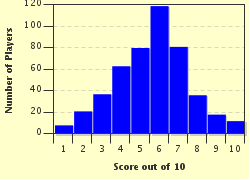Quiz Answer Key and Fun Facts
1. Let's begin with an obvious, perhaps even cliche example, of naive wishful thinking and a do-nothing attitude that helped to propel the world into the horror that became known as World War II.
Which European leader believed in 1938 that he had obtained "peace for our time" by attempting to negotiate with and appease Adolf Hitler over Czechoslovakia and the Sudetenland?
2. On 13 December 1937, a horrific event took place in the Far East with the estimated victims in just the first six weeks of the conflict numbering around 200,000 dead.
What two countries were involved in this blood-letting that occurred while the rest of the world stood by and watched?
3. What well-known US Senator actually spoke concerning the "unfairness" that he felt had faced German army defendants after a post-war trial that intended to prove they had engaged in the "Malmedy Massacre"; an action that had left 84 American soldiers dead, shot at point-blank range in the head?
4. Fort Santiago was the core area of a terrible massacre during WWII, that accounted for at least 100,000 civilians killed.
Where would one find this location?
5. In 1944, while Paris, France was enjoying the celebrations associated with the liberation of their city by Allied Forces, a small town in the interior of France was roiling in misery.
On 25 August 1944, in a small farm commune consisting of roughly 500 people, 124 of its citizens were massacred, 44-48 of whom were children, by German SS troops.
What was the name of this town?
6. What military leader was responsible for the "Parit Sulong Massacre" in Malaysia, on 22 January 1942?
7. In October 1935, just prior to the beginning of WWII, Italy invaded the almost defenseless country of Abyssinia, (Ethiopia). Approximately how many Ethiopians were killed, (according to estimates by their government), during the entire Italian occupation?
8. At least there were 30 survivors among this group of people out of a total of 12,884 initial captives ... Well, maybe that's not so good, after all.
In what city were these poor unfortunates captured, on 16-17 July 1942?
9. The Germans blamed the Russians. The Russians blamed the Germans. The rest of the world took its time in finding out the truth. What country was actually responsible for the deaths of between about 4,000 and 22,000 military troops and civilians who were massacred at Katyn, Poland, on 3 April 1940?
(Note: the disparity between the two estimates of people killed varies widely, due in part to poor record keeping, and in part to deliberate deceptions.)
10. General text of signs on public establishments in June, 1941 during WWII:
"NO SERBS, JEWS, NOMADS (meaning 'gypsies'), AND DOGS."
Some welcome!
Which fascist nation was the home of such viputerative hatred?
Source: Author
logcrawler
This quiz was reviewed by FunTrivia editor
bloomsby before going online.
Any errors found in FunTrivia content are routinely corrected through our feedback system.

